How Do You Scrape Telegram Channel Data Using Python For Effective Communication?

Telegram scraping enables data extraction from Telegram channels, groups, and user profiles for various purposes, such as market analysis, content curation, and community monitoring. Utilizing specialized tools or scripts, users can automate the retrieval of information like messages, user details, and media files from public Telegram sources. Leveraging Telegram\'s API and third-party libraries facilitates the process, allowing for the collection of valuable insights into user interactions, preferences, and emerging trends within the platform. Ethical considerations and adherence to Telegram\'s terms of service are crucial when engaging in scraping activities to ensure privacy and compliance. Scraping Telegram data applications in social media analytics, business intelligence, and academic research is a powerful tool for harnessing and interpreting the wealth of data circulating within the Telegram network.
List of Data Fields
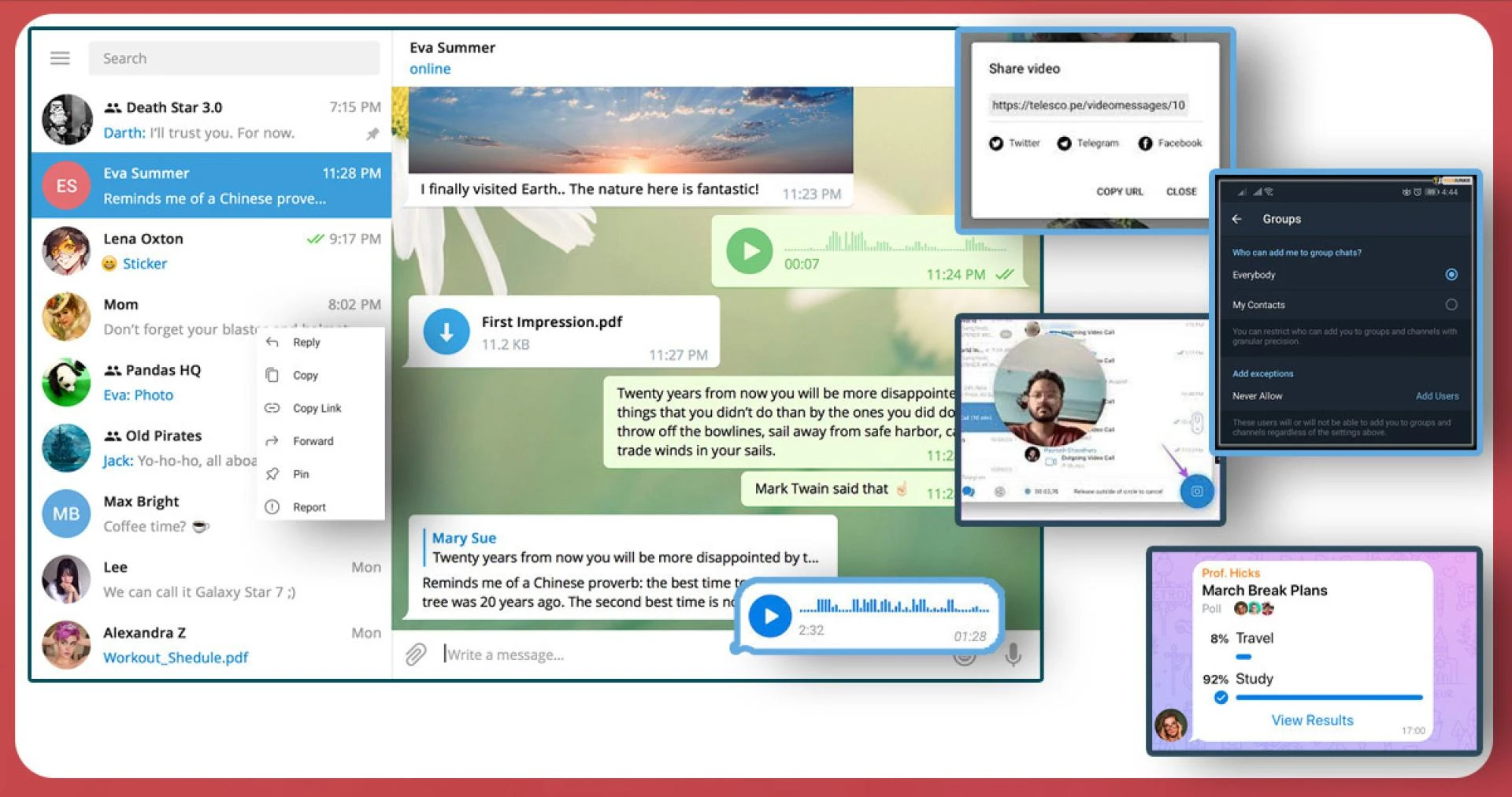
User Information:
- Username
- Display Name
- Bio/description
- Profile picture
Message Data:
- Text messages
- Media files (photos, videos, documents)
- Timestamps
- Message sender information
Channel/Group Details:
- Title
- Description
- Member count
- Join Date
Media Files:
- Photos
- Videos
- Audio files
- Documents
Link Previews:
- URLs shared in messages
- Link previews (title, description, image)
User Interactions:
- Likes (if available)
- Comments (if applicable)
- Forwarded messages
Channel/Group Members:
- Usernames/names of members
- Join dates
- Roles (if applicable)
Bot Information:
- Bot username
- Commands supported
Poll Data:
- Questions
- Options
- Poll results (if available)
Role of Python for Telegram Scraping
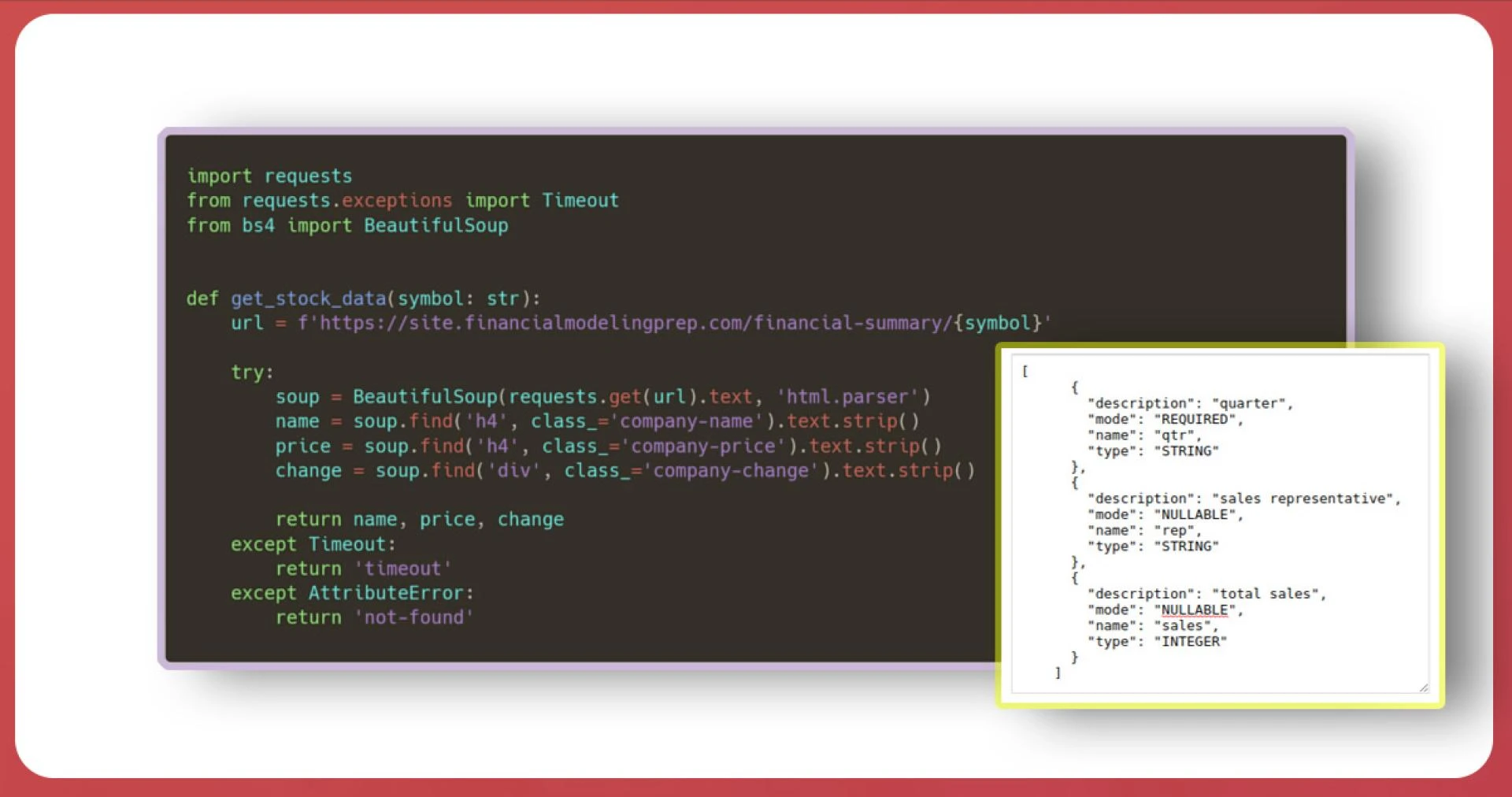
Python plays a significant role in Telegram scraping due to its versatility, extensive libraries, and ease of use. Several Python libraries and frameworks simplify interacting with Telegram\'s API and parsing data. Here\'s how Python is instrumental in Telegram channel data scraping:
- Telegram API Interaction: Python provides libraries like python-telegram-bot, allowing developers to interact with Telegram\'s Bot API. It facilitates sending requests to Telegram servers to access information from channels, groups, and user profiles.
- Web Scraping Libraries: Python offers powerful web scraping libraries like BeautifulSoup and Scrapy that are valuable for extracting structured data from HTML pages, including those on the Telegram web version.
- Asynchronous Programming: Asynchronous frameworks like asyncio and libraries like aiohttp enhance the efficiency of scraping tasks by allowing multiple requests to be processed concurrently, reducing the time it takes to fetch and process data.
- Data Parsing and Manipulation: Python excels in data manipulation and parsing. Libraries such as BeautifulSoup and regular expressions aid in extracting specific information from HTML responses or JSON data received from the Telegram API.
- Handling JSON Data: Telegram API responses are often in JSON format. Python\'s built-in support for JSON and libraries like JSON simplifies the parsing and handling of JSON data.
- Proxy Support: Python libraries, such as requests, can be configured to work with proxies, which can help avoid IP bans and throttle during scraping activities.
- Community Support: The Python community actively contributes to developing Telegram-related libraries and tools. It ensures developers can access resources and support when working on Telegram scraping projects.
- Automation and Scripting: Python is known for its scripting capabilities, making it easy to automate repetitive tasks in the scraping process. Schedule the scripts to run at specific intervals to keep data up-to-date.
Before diving into the process, ensure you possess a Telegram account and have configured your API settings. You can bypass the setup phase if you\'ve already acquired your API keys.
Initiating the Telegram API
Before scraping Telegram channel data using Python, ensure you\'ve set up a Telegram account and configured your API settings. If you\'ve already generated API keys, proceed to the next steps; otherwise, follow the setup instructions.
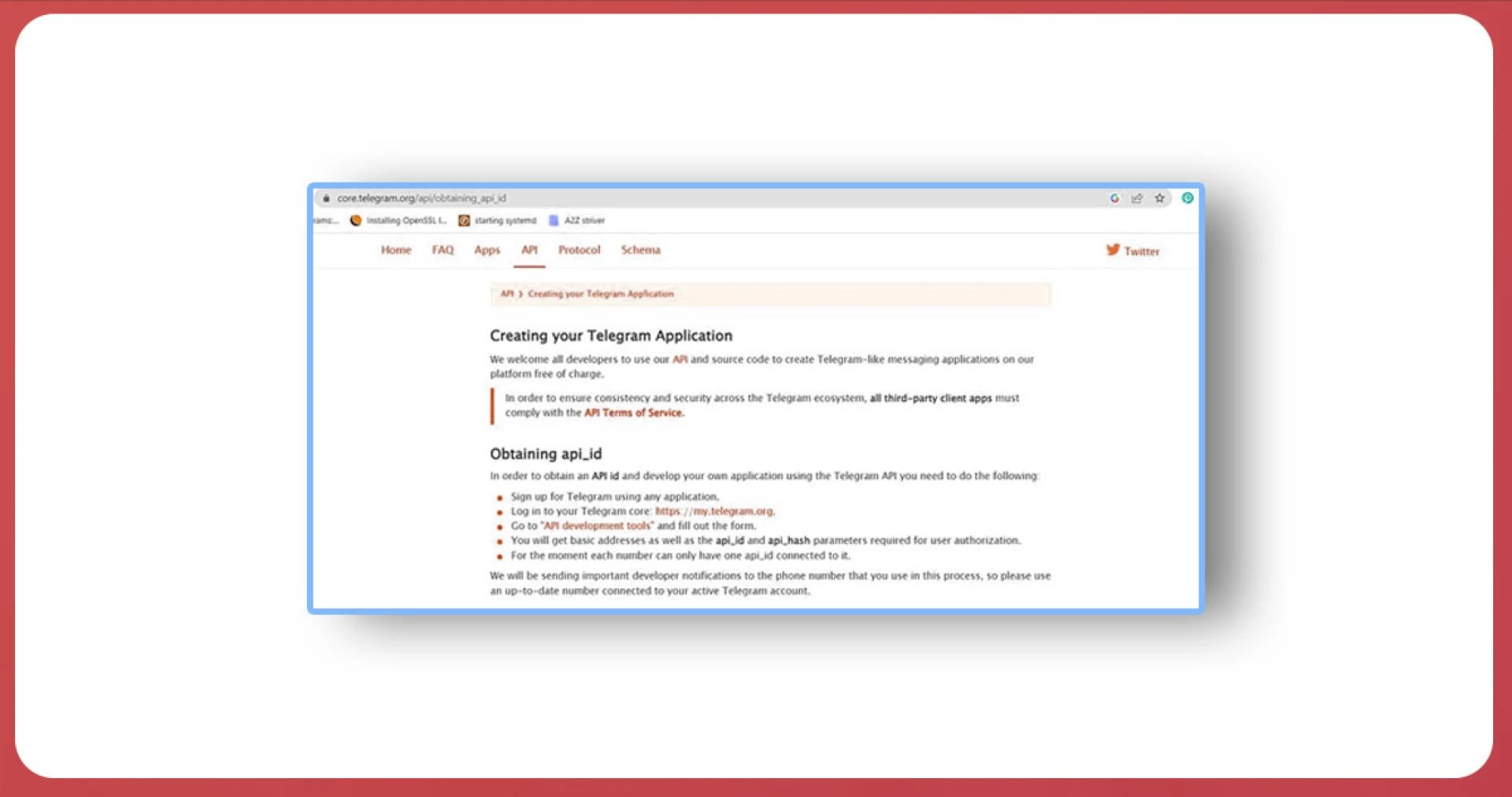
Follow the provided link to access the API development tools and Scrape Social Media data. Within this interface, enter the necessary details in the form. Upon submission, generate an application. Retrieve the App api_id and App api_hash from this newly created application. Safeguard these API keys, as they will be essential for future usage. To begin, utilize the Pyrogram documentation template as a starting point for your program.
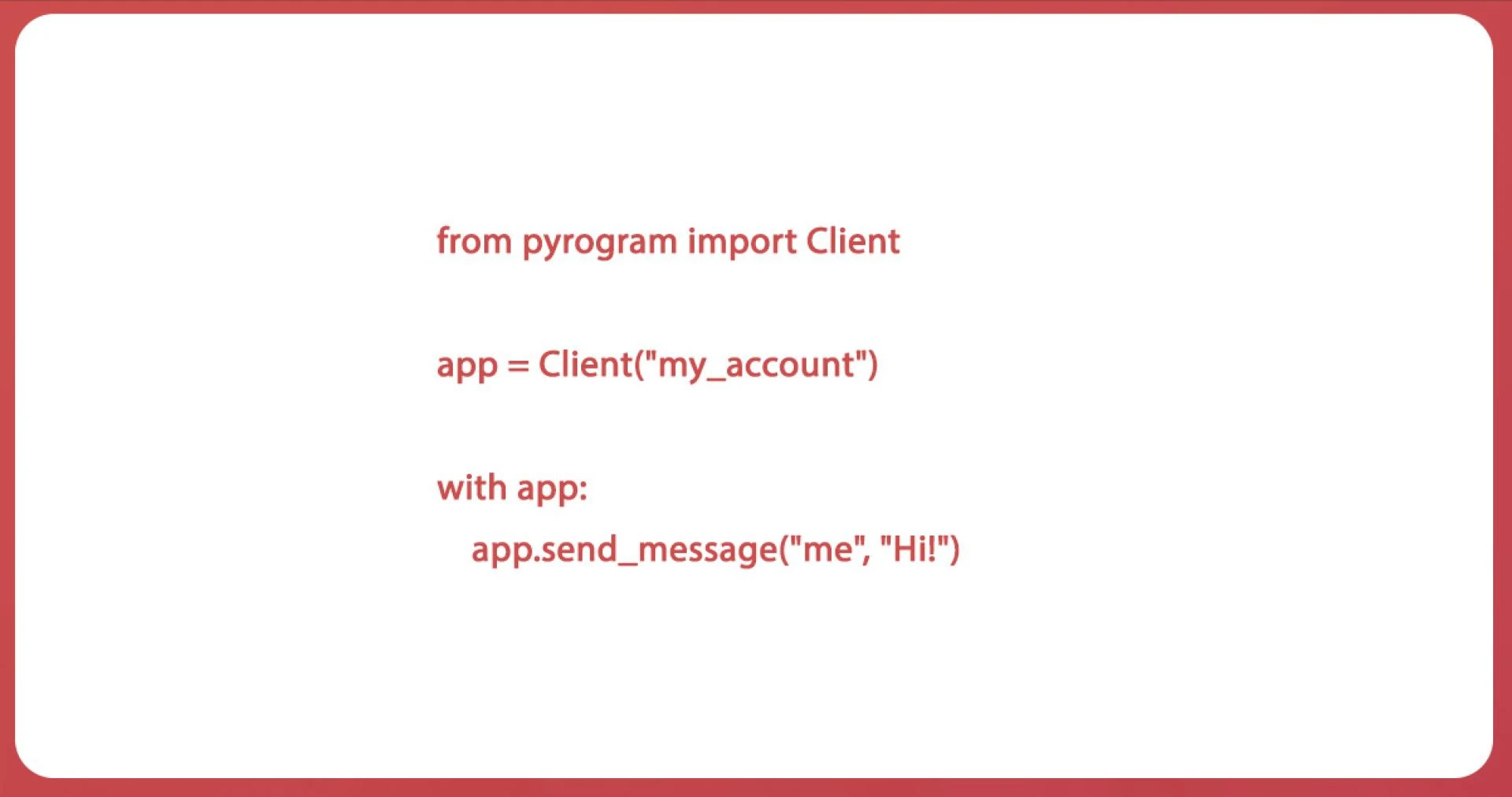
Establish a fresh directory named PYROGRAM. Inside this directory, generate a .env file to store the previously saved API id and API hash securely.

Packages

Enhance Pyrogram performance by installing tgcrypto.

Conclude the setup with the final step: create a new file named pyrogram_starter.py and insert the following code.
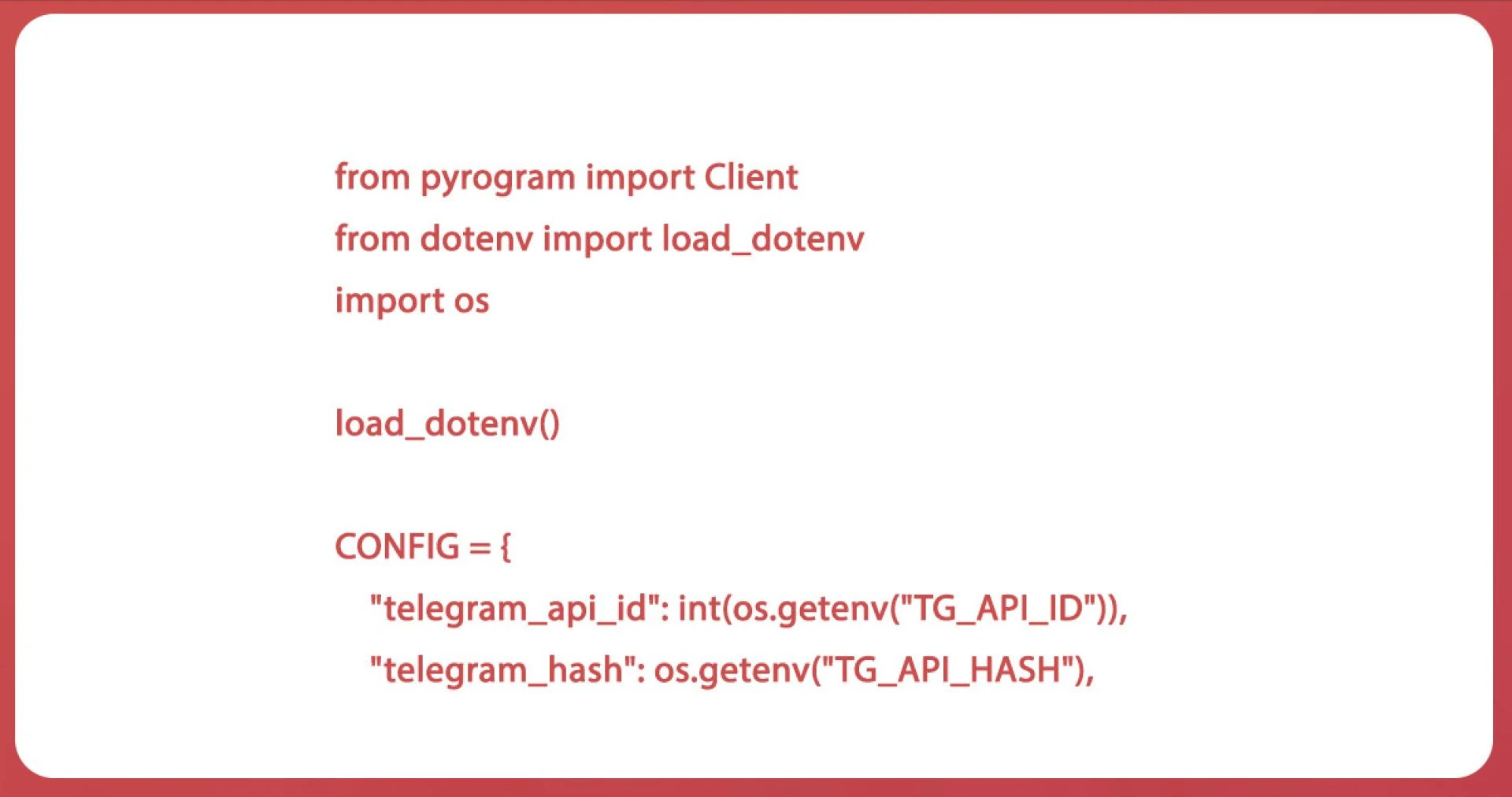
Upon the initial run of this file, it prompts for your Telegram number. Subsequently, generate a session file, eliminating the need to repeat these steps in the future.
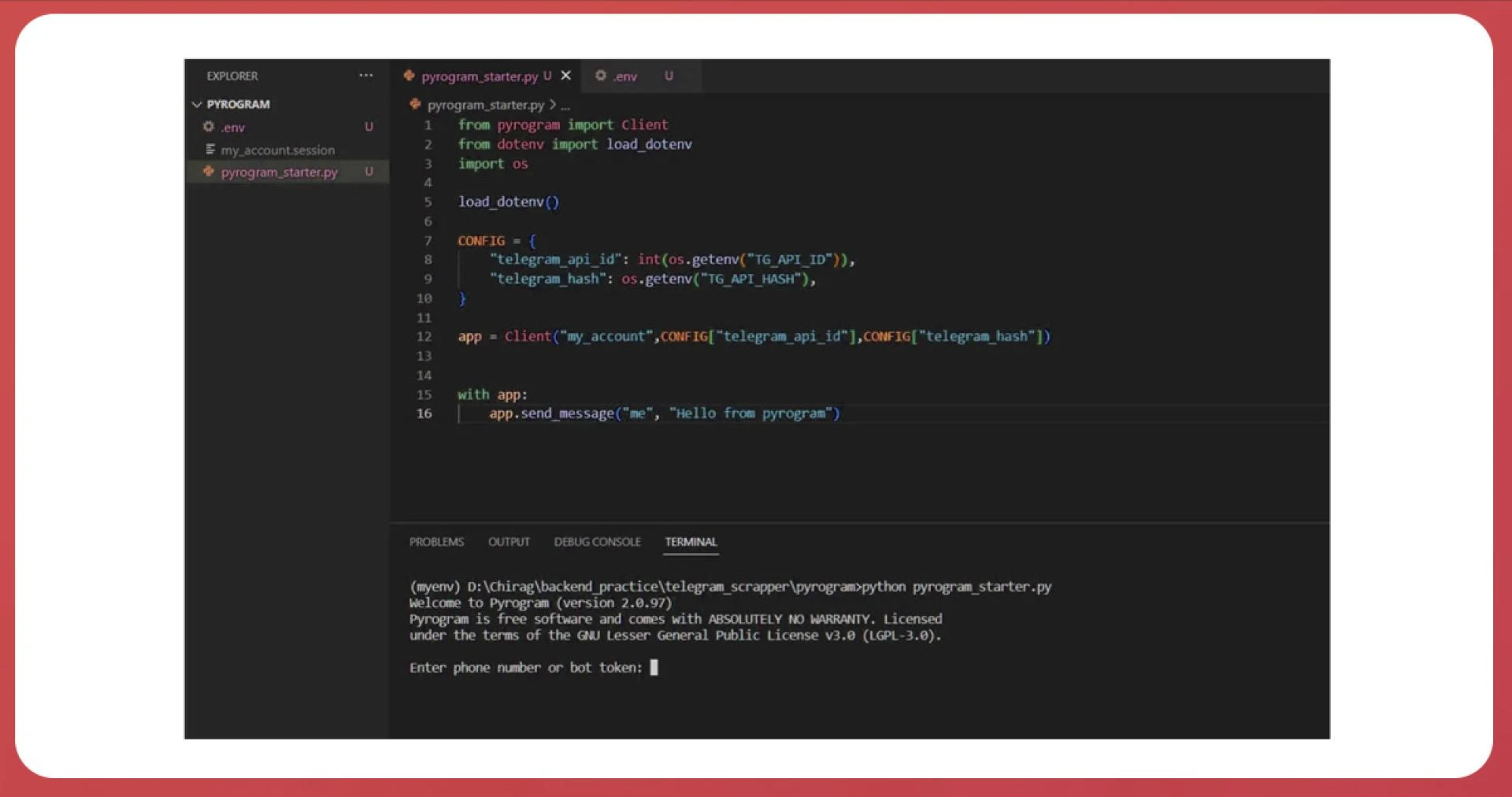
You\'ll receive a verification message on your Telegram account upon successful confirmation.
Congratulations! The initial setup for Pyrogram is complete, marked by celebratory emojis. 🥳🥳🥳🥳
Pyrogram offers numerous API methods, and we\'ll explore and implement a few. Let\'s commence with scraping channel messages using the get_chat_history API call.
Our Telegram data scraper retrieves messages in reverse chronological order. Parameters such as limit and offset can be utilized, with no default limits applied to this API call.
To extract data from a specific channel, joining it as a user is imperative.
For this specific API call, we\'ll be scraping messages from The Indian Express channel. Initially, the objective of Telegram data scraping services is to obtain the channel ID or reference, a requirement for invoking the API call.
If the channel is public, you can conveniently use its username as the ID. Alternatively, you can extract the channel ID from the URL. Let\'s focus on The Indian Express channel and gather either the username or the channel ID for the subsequent API call.
For the selected channel, The Indian Express, a different channel ID, say -987654321, is identified. It\'s crucial to prepend -100 to the channel ID to make the API call functional. Consequently, the modified channel ID for practical API usage becomes -100987654321. Utilize this adjusted channel ID in all subsequent API operations.
To accommodate the asynchronous nature of this API call, we employ the \'async\' functionality in Python. The asyncio library is a fitting choice for simulating asynchronous behavior, although it falls beyond the scope of this article and could be available in a future piece.
For our existing code to function appropriately, it now takes on the following structure:
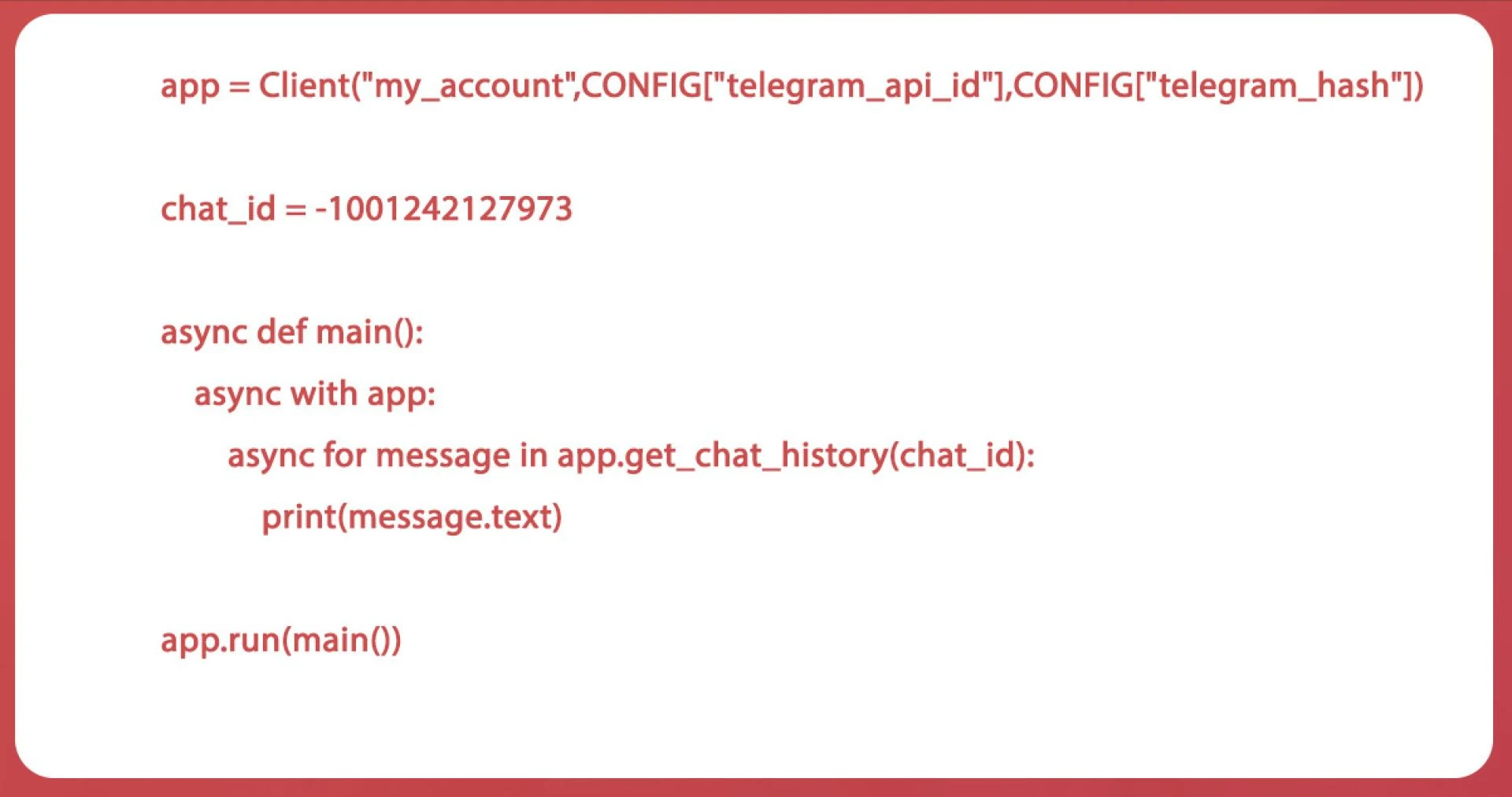
To enhance code flexibility, consider incorporating the chat_id as an environment variable or as part of utility functions. Executing the provided code may result in an infinite loop due to the absence of applied limits. To halt the execution, interrupt the terminal.
The terminal output will display messages retrieved from the specified Telegram channel. If you wish to examine the JSON structure of the messages, modify the print statement by excluding the ".text" attribute. This adjustment allows you to inspect the raw JSON data associated with each message.

Introduce a hard stop by utilizing the \'limit\' parameter to control the number of messages obtained. For instance, if you aim to access a personal contact chat from the Telegram web, replicate the process for obtaining group messages. However, in this scenario, excluding the -100 prefix is sufficient, and only a single dash (--) is needed.
To retrieve information specific to your account, employ the \'get_me\' API call. This call details the authenticated user, offering a convenient way to access your Telegram account information.

Suppose you\'ve joined a public group and aim to gather user information. The \'get_chat_members\' method proves helpful for this task, allowing you to retrieve details about group members. However, be mindful of some instances where restricted permissions may hinder access to member information.
It\'s crucial to note a limitation associated with this call: it solely returns the initial 12,000 members. If the group\'s membership surpasses this threshold, extracting information about all users becomes unfeasible using this specific method. Consider alternative approaches or break down the task based on membership ranges to circumvent this limitation.

For broadcasting updates or sending messages through an API call, employ the \'send_message\' method, as previously demonstrated at the outset. Substitute the \'chat_id\' parameter with the corresponding channel ID of your target group.
Consider creating a dedicated test group for experimenting with these methods. It ensures a controlled environment for testing and prevents unintended consequences when applying these API calls to a larger audience.

Conclusion: This article provided a foundational grasp of Pyrogram and its API calls, focusing on critical methods like \'get_chat_history\' and \'send_message.\' To delve deeper, exploring the official Pyrogram documentation is recommended. Building a Python application and hands-on experimentation will solidify understanding and uncover more advanced functionalities. It marks the initial step towards harnessing the full potential of Pyrogram for tailored and sophisticated applications.
Please contact iWeb Data Scraping for a comprehensive range of data services! Our committed team is ready to assist you, whether you need web scraping service or mobile app data scraping. Contact us today to discuss your specific needs for scraping retail store location data. Let us showcase how our customized data scraping solutions can deliver efficiency and reliability tailored precisely to meet your unique requirements.
Know More:
https://www.iwebdatascraping.com/scrape-telegram-channel-data-using-python.php
#ScrapeTelegramChannelDataUsingPython,
#ScrapingTelegramChannelDataUsingPython,
#ExtractTelegramChannelDataUsingPython,
#Scrappingtelegramchannelswithpython,
#TelegramChannelScraper,


